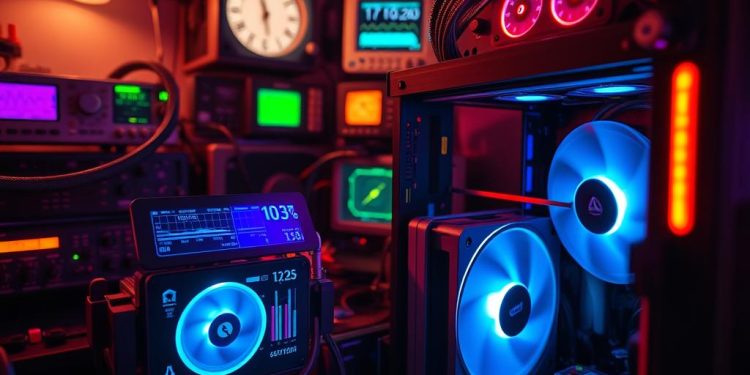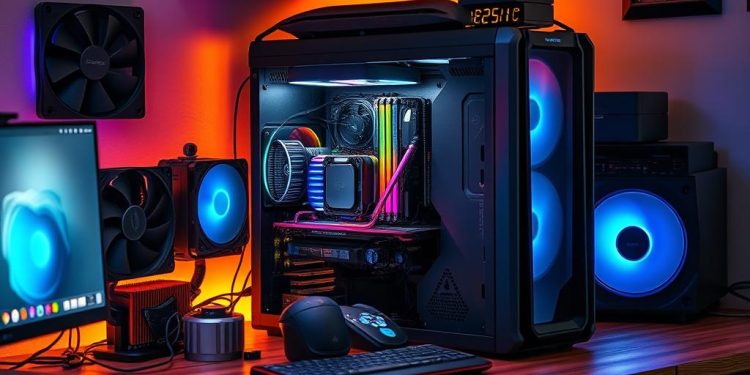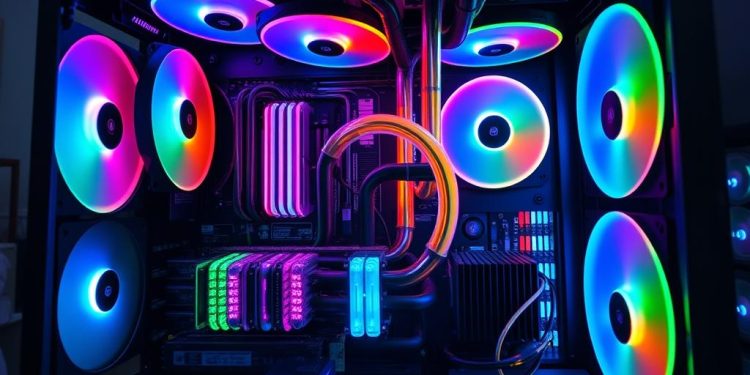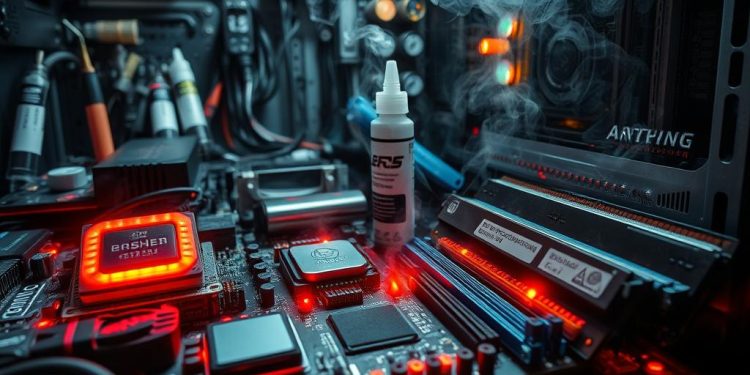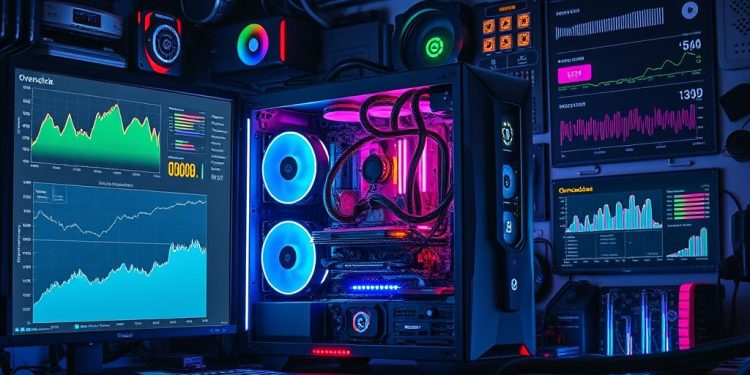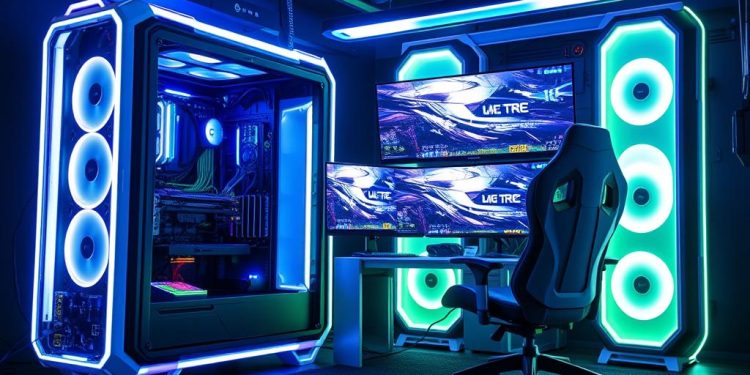If you’re looking to enhance your system’s performance, CPU overclocking basics might just be the key! Overclocking is a technique that allows you to run your CPU at higher speeds than its manufacturer specifications, resulting in notable boosts for tasks such as gaming or video editing. However, before diving into entry-level overclocking, it’s essential to understand the safe practices involved.
While the potential for performance gains is exciting, remember that overclocking can ruin your hardware if not approached carefully. It’s crucial to ensure that your cooling solution is adequate, ideally with a TDP rating 30-40% higher than what your CPU requires at its maximum TDP. Additionally, a good power supply, capable of sustaining an extra 150-200 watts more than estimated system demand, can make all the difference in maintaining stability.
Throughout this guide, you’ll find valuable insights into how to safely overclock your CPU while mitigating risks like overheating or system instability. So, gear up for a journey that will empower you to maximize your PC’s potential without compromising its longevity!
Understanding CPU Overclocking
CPU overclocking involves increasing the clock speed of your processor beyond its factory-set levels. This practice allows your CPU to perform more calculations per second, leading to noticeable performance enhancement, particularly during resource-intensive tasks such as gaming and video editing. With advancements in technology, users now have better access to overclocking techniques that help optimize processor performance.
What is CPU Overclocking?
At its core, CPU overclocking consists of adjusting two pivotal settings in the BIOS: the CPU multiplier and voltage. These modifications increase the CPU’s operational speed, which promotes enhanced performance output. For instance, raising the CPU multiplier effectively instructs your processor to execute additional cycles per second, substantially augmenting its computational capabilities. Notably, while Intel’s Alder and Raptor Lake chips offer significant overclocking headroom, AMD’s Ryzen 7000 series features less manual support yet includes automated options for improved performance.
How Overclocking Works
The principle of overclocking reflects in the adjustments made within the BIOS setup. For example, a basic CPU ratio multiplier of 50 yields a frequency of 5 GHz when using a 100 MHz base clock. Users often find software tools like Intel’s XTU or AMD’s Ryzen Master helpful for making real-time adjustments, though BIOS changes necessitate reboots. Effective cooling solutions are vital, as overclocking raises heat generation significantly. It is recommended that your cooling setup can handle at least 40% more TDP than the CPU’s rating for optimal performance, particularly when overclocking high-end models like the Core i7 or Ryzen 9.
Risks of Overclocking
Despite the enticing possibilities of performance enhancement, the risks of overclocking should not be overlooked. Overheating can occur, leading to potential hardware damage if temperatures and power levels aren’t monitored effectively. Users should also be wary that improper overclocking can result in system instability, crashes, or even data corruption. Furthermore, many CPUs that come with locked multipliers, such as a majority of Intel models, limit the extent of achievable overclocking. Engaging in these modifications may also void your warranty, adding another layer of risk to this exciting yet dangerous endeavor.
| Factor | Intel | AMD |
|---|---|---|
| Overclockable Models | K-series CPUs (e.g., Core i5, i7, i9) | All series except A-series (first-gen Ryzen 7 5800X3D is an exception) |
| Required Motherboard | Z-series for full core frequency overclocking | All chipsets except A-series |
| Cooling Recommendation | 240mm AIO for Core i5; 280mm for Core i7/i9 | 40% more than TDP rating for best results |
| Software Tools | Intel XTU | AMD Ryzen Master |
| Warranty Impact | Voids warranty | Voids warranty |
Preparing for Overclocking
Before embarking on your overclocking journey, it’s essential to ensure your system is ready for the task. This preparation includes understanding the hardware requirements for overclocking, checking compatibility of your components, and updating the BIOS to optimize performance.
Hardware Requirements
Successful overclocking hinges on several hardware components. Key requirements include:
- CPU Cooler: A high-quality cooler is essential, as stock coolers often fail under increased loads. Consider cooling solutions like AIO systems with at least a 240mm radiator.
- Power Supply: A robust power supply is crucial to handle the extra wattage demands. Ensure your PSU meets the recommended wattage for your hardware.
- Compatible Motherboard: Select a motherboard designed for overclocking, as a $150 board may not support stable performance compared to a $500 option.
Checking Compatibility
Before making adjustments, verifying the compatibility of your components is vital. Not all CPUs and motherboards support overclocking. Research supported CPUs and motherboards to ensure they’re designed for overclocking, particularly focusing on Intel processors with the “K” suffix and most AMD Ryzen CPUs. Confirming these details prevents potential instability during your overclocking efforts.
Updating BIOS/UEFI
Updating your motherboard’s BIOS or UEFI should be a priority before you begin overclocking. Manufacturers regularly release updates that enhance compatibility and stability improvements for new hardware and cooling solutions. Accessing the BIOS interface for setting adjustments is crucial, so ensure you install the latest BIOS version to maximize your overclocking potential.
CPU Overclocking Basics
Overclocking your CPU can significantly enhance performance by squeezing out additional power from your hardware. The process involves using BIOS to adjust various parameters related to CPU performance. Understanding these basics will give you the confidence to explore overclocking settings suitable for your setup.
Using the BIOS for Overclocking
To begin overclocking, access the BIOS or UEFI settings during your system’s startup. This usually involves pressing a certain key, often DEL, F2, or F10, depending on your motherboard manufacturer. Once inside the BIOS, locate the CPU core settings for essential configurations. Adjusting the CPU multiplier is a common way to enhance performance, with each increment effectively increasing the CPU’s operating frequency. Keep in mind that this adjustment should be done now and then, balancing higher performance with stability.
Adjusting CPU Multiplier and Voltage Settings
While adjusting your CPU multiplier is crucial for overclocking, you may also need to fine-tune voltage adjustments to ensure stability. Higher clock speeds lead to increased power demand; adequate voltage is necessary to prevent crashes during demanding tasks. Beginners should start with a safe voltage below 1.30V, favoring the 1.15-1.20V range initially. Monitor your temperatures closely, as overclocking limits can vary depending on the specific CPU model. For instance, Intel’s 13900K is recommended to stay within a maximum temperature of 80-85°C during stress testing.
| Parameter | Intel 13900K | AMD Ryzen |
|---|---|---|
| Max Turbo Frequency (P-Core) | 5.40 GHz (Multiplier: 54) | Varies by model |
| Max Turbo Frequency (E-Core) | 4.30 GHz (Multiplier: 43) | Varies by model |
| Recommended Starting Voltage | 1.15 – 1.20V | 1.10 – 1.20V |
| Recommended Max Temp | 80 – 85°C | 80 – 85°C |
Testing and Monitoring Your Overclock
After making adjustments to your CPU settings for overclocking, it is essential to conduct thorough testing to confirm that your system can handle the changes without failure. Stability testing plays a significant role in this process. Running software such as Prime95 or AIDA64 allows you to perform system stress tests, where the CPU is pushed to its limits. Pay attention to any crashes or errors; your goal is to ensure stable operation for several hours.
Stability Testing Techniques
Utilizing effective stability testing techniques will greatly enhance your system’s reliability. Here are some methods you can implement:
- Run stress tests for a minimum of 2 hours to assess stability.
- Record system performance benchmarks to compare against stock settings.
- Gradually increase your CPU multiplier and re-run tests after each adjustment.
- Monitor any temperature spikes during system stress tests, as they could signify potential overheating.
Monitoring Temperatures and Performance
Continuous temperature monitoring after overclocking is crucial. Tools like HWMonitor or Core Temp provide real-time readings, allowing you to evaluate cooling checks effectively. Recommended operational temperatures for most CPUs should ideally fall between 40–65°C (104–149°F). If your CPU temperature exceeds these limits during heavy loads, consider reevaluating your cooling solutions.
Additionally, overclocking can cause significant increases in power consumption—up to 150W or more. Ensuring your power supply meets this demand is vital for system stability. By adhering to these practices, you can safely enjoy the enhanced performance of your overclocked CPU while minimizing risks associated with instability.
Conclusion
Successfully overclocking your CPU can yield impressive performance enhancements, allowing your system to reach clock speeds exceeding standard specifications. Adopting safe overclocking practices is essential to ensure that you achieve the best results while minimizing risks. With careful adjustments and thorough testing, you can elevate your base clock speed—such as moving from 3.5 GHz to over 4.5 GHz—resulting in a potential performance increase of approximately 28.6%. This upgrade can lead to notable boosts in gaming frame rates, enhancing your overall experience.
However, the significance of performance stability shouldn’t be overlooked. Increasing clock speeds can also lead to elevated power consumption, with demands rising by 20-30% or more. Ensuring your power supply is capable of handling this load is vital. Equally important is choosing an effective cooling solution. Leveraging high-quality air or liquid cooling can reduce CPU temperatures significantly, ensuring optimal operation while avoiding overheating, which is crucial for longevity.
In the end, maintaining an awareness of your CPU’s thermal limits and implementing rigorous stability testing will safeguard your hardware against degradation and failure. By focusing on optimizing CPU settings and consistently monitoring performance, you can enjoy enhanced capabilities without sacrificing safety. Always remember to balance performance gains with manageable temperatures and responsible practices for any long-term overclocking journey.



